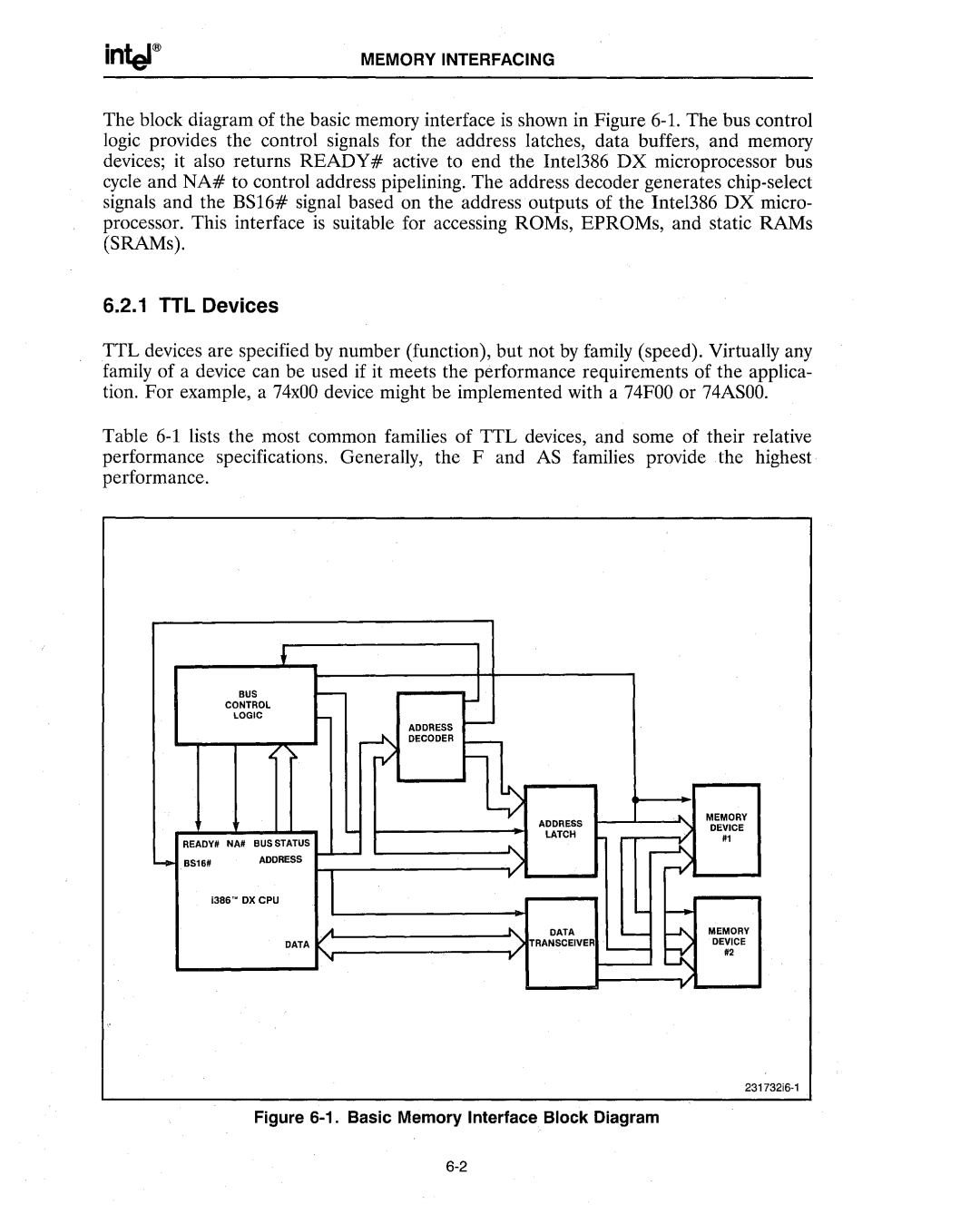MEMORY INTERFACING
The block diagram of the basic memory interface is shown in Figure 6-1. The bus control logic provides the control signals for the address latches, data buffers, and memory devices; it also returns READY# active to end the Intel386 DX microprocessor bus cycle and NA# to control address pipelining. The address decoder generates chip-select signals and the BS16# signal based on the address outputs of the Intel386 DX micro- processor. This interface is suitable for accessing ROMs, EPROMs, and static RAMs (SRAMs).
6.2.1 TTL Devices
TTL devices are specified by number (function), but not by family (speed). Virtually any family of a device can be used if it meets the performance requirements of the applica- tion. For example, a 74xOO device might be implemented with a 74FOO or 74ASOO.
Table 6-1 lists the most common families of TTL devices, and some of their relative performance specifications. Generally, the F and AS families provide the highest performance.
~ | |
BUS | I -- |
CONTROL | |
LOGIC | |
| ADDRESS |
| ~ DECODER |
~ ~ | ;I |
READY# NA# BUS STATUS
---.. BS16# | I ... - |
| ADDRESS |
;386" DXCPU
f-
!----
flb
ADDRESS
LATCH
"
'"
| A | DATA | """"- | be | MEMORY |
DATA | ... | "\ ~RANSCEIVER | '---- | DEVICE |
| I'" | | #2 |
| | | |
| | | | I'" | |
231732i6-1
Figure 6-1. Basic Memory Interface Block Diagram
6-2

